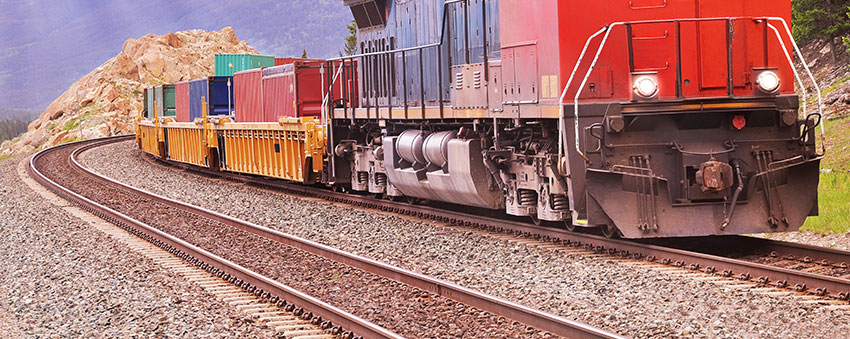
Contrary to popular belief, railroads did not begin in the modern era. In fact, railroads began like many of our inventions and ideas: in ancient Greece. The idea was lost in time, and the first modern railways debuted in the 1550s, which paved the way for our modern rail system that transports goods and services all across America and helps to keep our buildings heated and our store stocked with wares.
SITECH Rocky Mountain offers the best construction technology and construction management software to our customers in Colorado, New Mexico, and far west Texas. Our mission is to help industries, such as the construction and rail industry, with their technology needs. We can help with railway track construction, high-precision track surveying, and real-time generation of data for tamping machines. When you partner with us, you’ll get a partner dedicated to your success. Below, we’ll take a brief look at the history of railroad technology from ancient times through the 1800s. Reach out to our team to get started today!

The Beginning of “Railroads”
The Greeks were among the first civilizations to travel a lot outside of their “comfort zone” if you will. That was mainly due to their desire to conquer other civilizations and peoples and gain land. In order to better efficiate travel in a world where roads were poor at best and mostly non-existent, the Greeks decided to make grooves in the roads they did build so their wheeled vehicles (carts, chariots, wagons, etc) could move more easily beginning around 600 BC. However, the Romans came along and, for whatever reason, did not continue with this for their roads.
As most of you know, what followed the fall of the Roman Empire was the Dark Ages, and no major breakthroughs for rail travel happened during that time. It was an era dominated by peoples trying to establish their identities, fighting for territory, and seeking God. Finally, at the beginning of the Renaissance, movement began to happen as humans looked for better ways to move goods across lands.
Wooden Rail Systems
The Germans took up the cause of the rail in the middle of the 16th century as they used wooden rails to pull their horse-drawn wagons and carts more easily over predominantly dirt roads. Eventually, the Iron Age won out, and these wooden rails were replaced with iron rails, which lasted longer and thus required a lot less maintenance. Tramways sprang up in major European cities, and the invention of the flanged wheel with grooves that could grip rails better paved the way for the modern locomotives.

Rail Innovation at Its Best
It’s amazing how humans can continually improve upon their inventions. So, we’ve gone from grooves in the road by the ancient Greeks to wooden rails to iron. However, this was mostly cast-iron, which tended to fail frequently because it rusted and turned brittle. A better material was needed, so John Birkinshaw invented wrought-iron that was more durable in 1820. However, innovation was booming, and wrought-iron was quickly replaced by steel in the late 1860s. Steel was cheap to produce with new Industrial Revolution processes, so steel production and railroad production boomed, making almost every major U.S. city in America connected by rail to each other by the end of the 1800s.
Means of Transport
Now that the technical system of moving was figured out, next was what sat on top of the rails: the cart. Let’s face it, the open-aired horse-drawn cart on rails was just not going to cut it for society’s increasing demands for a better way. A steam-powered tramway replaced the horse-drawn carts in 1803. In 1812, the first steam-powered locomotive made its debut. This was soon innovated into a locomotive that could carry people in 1821 and, by 1825, the first combination of passengers and goods made its way on rails.

The Downfall of Steam Power
Inventions built upon themselves, and once the steam-powered engine was more or less perfected, the drawbacks of steam power became glaring. One was the smoke, which caused major health problems in big cities, and with the innovation of the subway systems across Europe and America, smoke underground was most definitely not a good idea. The new-fangled ability to harness electricity seemed to be the solution, but it was as yet unable to support rail travel.
Suffice it to say that with brilliant minds on the job, this was only a matter of time before this problem was solved. Steam power was eventually replaced by electric power. But that’s another story.
CHOOSE SITECH ROCKY MOUNTAIN FOR ALL YOUR RAIL SOLUTIONS
SITECH Rocky Mountain offers cutting-edge technological solutions for those in many industries, from construction and landscaping to aviation and railroads. We offer machine control systems so that you can maximize the use of your heavy equipment, making the jobs easier and safer, which saves time over the long run and ensures jobs are on-time and on-budget. We offer survey equipment rentals and a dedicated staff to help you choose systems and train you on them.
We offer mining technology featuring Cat® MineStar™ that can help you extend your equipment life, control costs, and enhance safety. You can analyze the operation of your fleet and detect collisions before they arise. We offer paving control for asphalt contractors to reduce downtime and redundant work. Our systems work with pavers, milling machines, asphalt compactors, and more.
We offer fleet and asset management systems that allow you to keep a health check on your machinery, as well as track your equipment with RFID technology that you can access using your smartphone or tablet. The technology and software solutions we offer are dizzying, and in truth, we offer so many solutions for dozens of industries that it can be hard to cover them all. We serve all of Colorado, New Mexico, and far west Texas with our headquarters in Aurora.
If you are interested in any of our technology solutions for your industry, including our rail solutions, call SITECH Rocky Mountain today!

